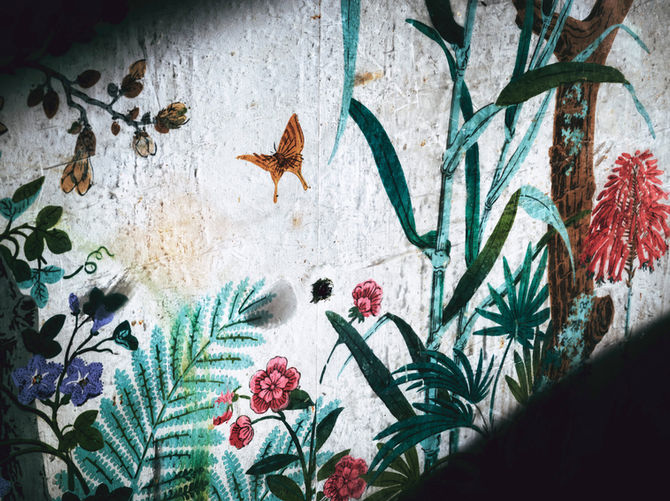PROJECTS
Hollywood Park was a historic horse racing track in Inglewood, California. It opened in 1938 as a leisure destination for celebrities. The owners eventually added a casino to the track complex. The site was sold in 2004, and the racetrack, clubhouse, and stables were torn down in 2013. The Hollywood Park Casino remained.
Rather than shutter a profitable business, the developers made plans to build a new casino 200 yards away. As the new casino was being built, the old one remained in operation 24 hours a day and 7 days a week. It sat among heavy machinery and dirt pits, alone on 300 acres of empty land in central Los Angeles. The interior had seen better days. Air freshener masked the stench of carpet and upholstery soaked with cigarette smoke.
At 2 a.m. on September 21, 2016, the new casino opened, and the old one closed in one fell swoop. Patrons moved to new chairs, drinks in hand, and resumed their games. Business continued as if nothing had happened. I felt compelled to photograph the old casino, now vacant and abandoned. Almost forensically, I focused on interior design details. I realized the casino was a second home for many of its regulars, and I explored how the wear and tear of the curtains, wallpaper, and light fixtures seemed to express the life of the people who spent time there. It was as if the casino had absorbed some of the human character and personality of its patrons.
The resulting photographs attempt to replicate the perspective of a devoted casino regular who might linger on small objects and fragments. Like souvenirs, these details evoke a memory of attachment. There is a tension between the concrete, singular thing documented and the abstract, social relationships it suggests. What value system was embedded in the design of the casino, and what value system did the patrons create over time? Commons (2016/2019) represents the particularities of a specific space as a way of producing an experiential history.
These photographs depict the wallpaper in the banquet room on the second floor in the pavilion above the former Hollywood Park Casino, now demolished. The floral design, which references late nineteenth-century ornamental motifs, seems to have been selected to signal Old European high taste and distinguished age. It must have originally imbued the room with glamour and a sense of fantasy. When the wallpaper started peeling, the proprietors protected it from further damage with sheets of Plexiglas, haphazardly drilled into the wallpaper. The Plexiglas unwittingly undoes the intention of the original, like an expensive couch covered in plastic. Through a clumsy attempt at preservation, the wallpaper becomes a metaphor for destruction—the effect of the original is destroyed by its protection.













